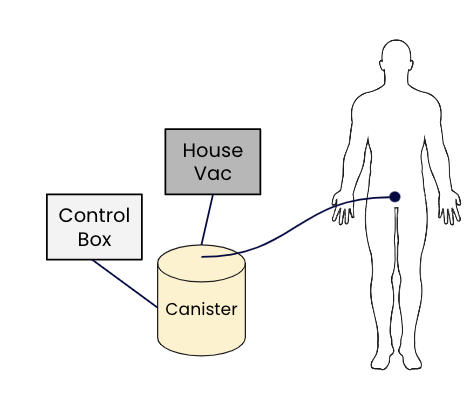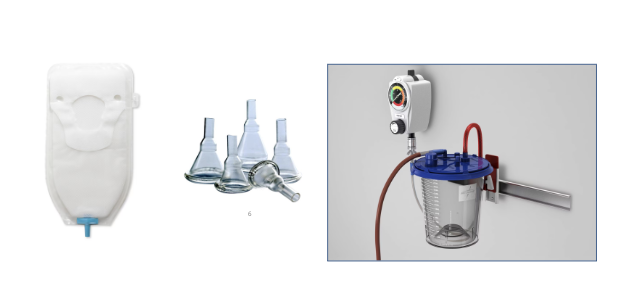About Vacuum Assisted Male External Catheters
A male external catheter is a non-invasive medical device designed to collect urine from the male urinary tract. It is worn externally over the penis and connected to a collection component, providing a convenient solution for urinary management in men. Vacuum-assisted external catheters offer an alternative to internal catheters to patients in a clinical setting due to their less invasive nature, reduced risk of infection, and ease of application and removal [1]. Unlike internal catheters that require insertion into the body, external catheters are applied externally, eliminating the need for invasive procedures. This significantly lowers the risk of infections associated with internal catheters, as there is no direct contact with internal bodily tissues [1]. Additionally, external catheters are easier to apply and remove, making them a more comfortable and convenient option for both patients and healthcare providers. Their non-invasive design promotes patient comfort and reduces the potential complications often associated with traditional catheterization methods.

Overall High-Level Schematic of Modified Male Vacuum External Catheter System
Current Devices
In the existing model, the device secures itself via an adhesion to the male mons pubis. This design features a pliable plastic material that loosely envelops the region, with padding beneath the penis to absorb excess fluid. However, the current attachment site models often result in unwanted leaks and insufficient suction. The device’s current configuration, which incorporates an absorbent layer only at the bottom, renders it less effective during movement and for individuals with smaller anatomies. The collection canister in current models, is connected to both the attachment site and the vacuum via polymeric tubing allowing urine to be suctioned into the canister. The canister has measurement lines to document inputs and outputs, with no further modifications.

Current attachment sites on the market are depicted with hospital vacuum and canister attachments.
Vacuum-assisted male external catheters, commonly referred to as condom catheters, can present several challenges in urinary management. The leakage from the current condom catheter renders clean-up measures from clinical staff that are more time-consuming, and the accuracy of urine output is often inaccurate. Additionally, patients may find themselves sitting in urine for extended periods, which can result in irritation of the surrounding skin [2]. Leakage is often attributed to factors such as movement or variations in penile anatomy, especially in cases of smaller anatomy. Another issue posed by the systems on the market is the lack of vacuum control, with suction being applied to the attachment site continuously. This poses complications such as attachment site irritation, bruising, and ulcers. Additional challenges for male external catheter systems include overflowing urine collection canisters when unemptied, and difficulties in obtaining urine specimens, as urine samples for analysis cannot be taken from the canister. These issues can lead to an increased demand for internal catheters among male patients, as opposed to using the external catheter systems on the market.
- Saint S, Krein SL, Fowler KE, Colozzi J, Ratz D, Lescinskas E, Chrouser K, Trautner BW. Condom Catheters versus Indwelling Urethral Catheters in Men: A Prospective, Observational Study. J Hosp Med. 2019 Mar 20;14:E1-E4. doi: 10.12788/jhm.3180. Epub ahead of print. PMID: 30897057; PMCID: PMC7839072.
- Sinha AK, Kumar N, Kumar A, Singh S. Condom catheter induced penile skin erosion. J Surg Case Rep. 2018 Oct 22;2018(10):rjy275. doi: 10.1093/jscr/rjy275. PMID: 30364498; PMCID: PMC6196988.
